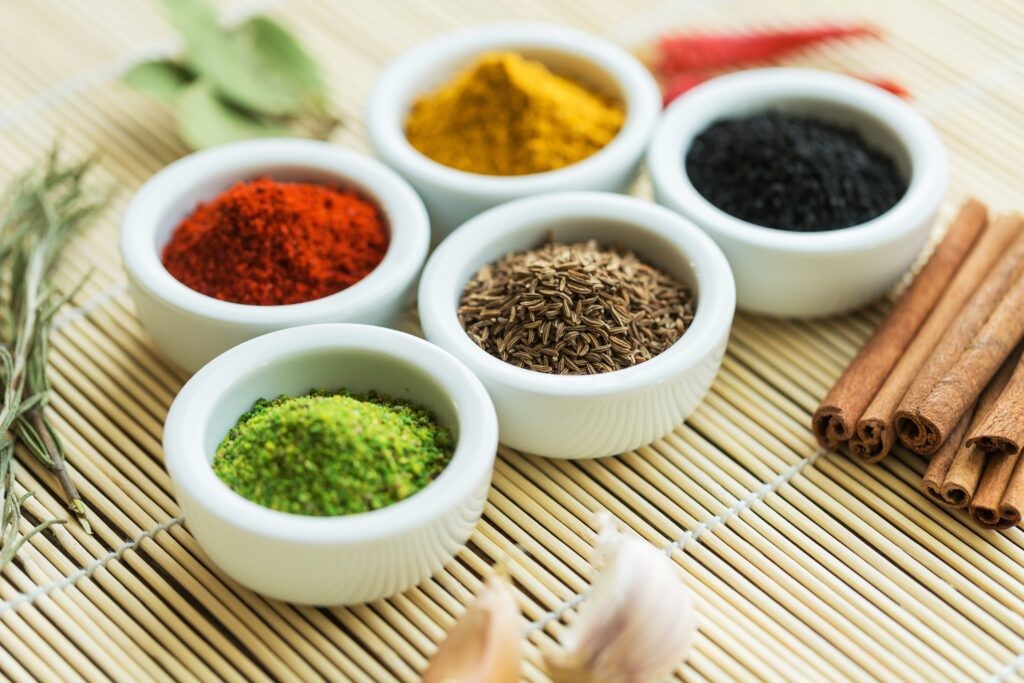Pakistani Cuisine Is Incomplete Without These Spices
Without a combination of desi spices, Pakistani cuisine is utterly lacking. Without the addition of flavorful spices (garam masala) or the powerful punch of mirch baghaar, you cannot fathom a well-prepared chicken karahi meal or a bowl of daal. Food would be difficult to appreciate without the distinctive tastes that spices offer.
The proper spice or combination of spices has long helped to define certain civilizations by giving the food of a country or people a flavor andfp a look that is uniquely their own. Garam masala, also known as mixed spice, has been a staple in curries and rice dishes throughout South Asia’s culinary history, and food isn’t regarded as good if it doesn’t contain any distinctively aromatic spices. In the subcontinent, “hot and spicy” is what constitutes delicious food, and the sensuous pleasure of a meal that has been properly spiced is just enough to respect the spices that make dining an experience.
Busting the Myth About Spices Being Unhealthy
Contrary to common assumptions, whole spices, which are frequently used in Pakistani cuisine, provide a number of health advantages. They may be eaten on their own or combined with meals to enhance flavor and scent. Due to their advantages, these spices have historically been used as ingredients in Pakistani families, but due to our fast-paced way of life, we have started to forget the origins.
Spices are Good for Health & Immunity
They are now utilized for more reasons than merely adding flavor and color to a dish. These spices have well-established advantages. Additionally, turmeric has antibacterial, antiviral, antifungal, and anticarcinogenic properties. It also possesses healing and anti-inflammatory qualities. The spice has acquired importance during the epidemic since it is an immune booster.
Black pepper, which is commonly used in foods, also aids in weight loss and the healing of coughs and colds. It becomes a tool to speed up metabolism when taken in the morning with hot water. Finally, cumin helps with digestion, boosts immunity, and heals respiratory and skin conditions. For long-term advantages, the majority of whole spices can be taken with hot water in the morning or by drinking the water they have been soaked in over night.
Essential Spices in a Pakistani Kitchen
The perfect combination of spices is the key to making the greatest Pakistani cuisine. In any dish, spices are essential. You could detect a very slight taste variation when one spice is missing. Additionally, there are situations when the distinction is really more obvious. It’s wise to stock up on some of these necessary spices if you intend to prepare some Pakistani cuisine.
Black Pepper
Although both black and white pepper come from the same climbing plant, black pepper is the primary ingredient in most Pakistani culinary recipes. This plant is indigenous to several locations, including the East Indies, Pakistan, India, Java, and Sumatra. Farmers select, dry, and grind the black pepper berries that were formerly present in their natural form. With its intensely peppery flavor and rich perfume, the spice elevates the quality of any dish.
Chaat Masala
The fragrance of the spice mixture could be rather overpowering to certain individuals who are unfamiliar with it. But do not misunderstand. Many Pakistani delicacies have a pleasantly tangy yet sweet flavor because of chaat masala.
You’ll need fennel seeds, cumin seeds, black salt, mint, crushed ginger, amchur or mango powder, and cayenne pepper to make this spice blend. Additionally, if you want to use it in additional recipes, you may store it in a jar that is well covered and even refrigerate it.
Cloves (Laung)
A clove’s resemblance to a flower may be your initial observation of it. In fact, cloves are made from the buds of dried clove tree blooms, which explains why.
Cloves are visually dark brown or black and have a strong, distinctive taste. Depending on the recipe, either whole or ground versions can be utilized. Just be sure to measure the cloves precisely since too many might have an overwhelming flavor.
Carom Seeds (Ajwain)
The carom seeds, also known as ajwain seeds, are smaller than cumin seeds and have a light brown color. The flavor and beautiful aroma of ajwain seeds are pretty reminiscent of thyme. In addition to using them in savory meals, people often boil them in water to soothe stomach discomfort.
It originates from a perennial member of the ginger genus. The interior of the turmeric is a saffron color but has a drab, grey outside. While it tastes rather harsh, it has a pleasant scent. Almost every other meal prepared in a Pakistani kitchen uses it as a condiment. It is also a well-liked component of pickles and chutneys. A dash of turmeric powder enhances a dish’s color, taste, aroma, and a host of health advantages.
Turmeric Powder (Haldi)
It originates from a perennial member of the ginger genus. The interior of the turmeric is a saffron color but has a drab, grey outside. While it tastes rather harsh, it has a pleasant scent. Almost every other meal prepared in a Pakistani kitchen uses it as a condiment. It is also a well-liked component of pickles and chutneys. A dash of turmeric powder enhances a dish’s color, taste, aroma, and various health advantages.
Cardamon (Elaichi)
Another spice that is often used in Pakistani cooking is cardamom. There are two types of it: Choti Elaichi, or green cardamom, and Badi Elaichi, or brown cardamom. Various kinds of curries, biryanis, and pilaus frequently contain Badi elaichi. Its interior seeds may also be used to produce garam masala. The Choti Elaichi, on the other hand, is frequently used in curries and sweet recipes.
When looking for cardamom seeds, be careful to choose ones with a deep brownish-black hue since they are of higher quality. Although they create a rich, fragrant perfume, these seeds will have a little sticky feel.
Cardamon can be purchased whole or ground. If a recipe asks for the whole cardamom, you’ll need to slightly open the pods to release the seeds’ full flavor. It has a potent scent and a flavor that is highly distinct and robust.






